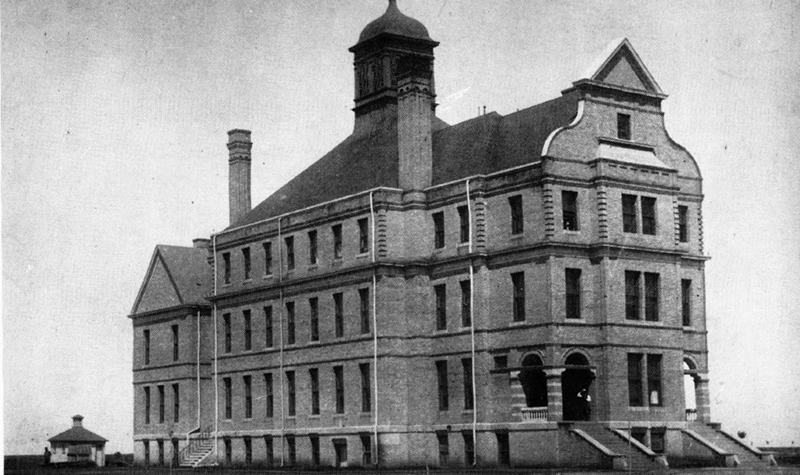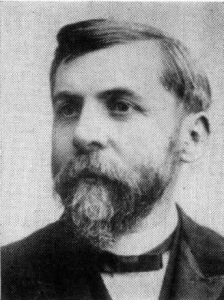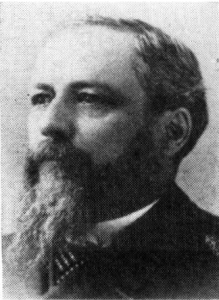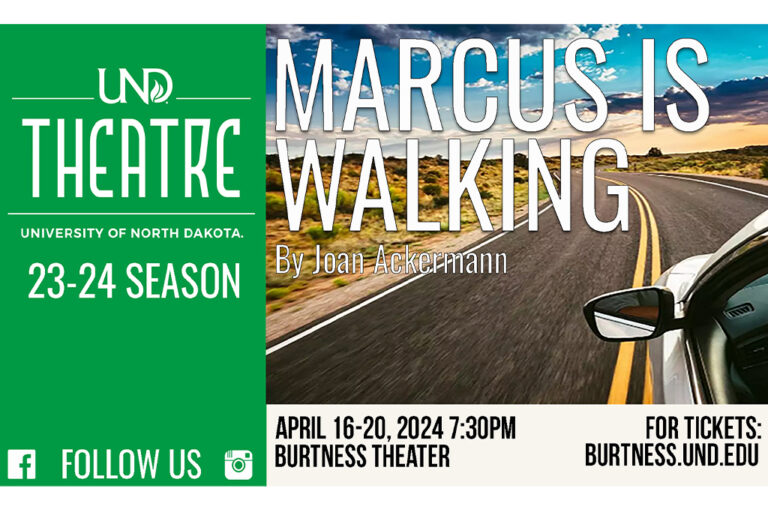Just who were the Founders anyway?
What better way to commemorate Founders Day than to remember the leaders whose actions built a flagship

The city of Grand Forks and the University of North Dakota seem so entwined that it is hard to think of one without the other. Yet, in the blistery winter of 1883, when the political climate might have been just as forbidding, their joint fate ostensibly hung on a gamble.
George Walsh, a member of the Dakota Territorial Council, who for years urged the establishment of a university in Grand Forks, seemed to risk it all when he accepted a proposition from fellow northern representatives to cast lots for it.
He might have had no alternative – his peers wavered under the overtures of their southern counterparts, set on snatching away the “prizes” of public institutions, which already predominantly dotted the south.
Walsh, who also pushed for the relocation of the territorial capital from Yankton to Bismarck, feared an unequitable spread of agencies would cripple northern Dakota on the political and economic arenas. Hence, he succumbed to chance, or so it appears.
The Fargo delegate drew the agricultural college, Bismarck got the penitentiary, Jamestown the insane asylum. Grand Forks obtained the university – by luck or by cunning, the distinction may as well be lost in the annals of history.
Hailing from Quebec and seeking prominence on the plains, Walsh did not stop here. Ever wary of his colleagues, he slipped several pages, blank except for a header – A bill for an Act Locating the University of North Dakota at Grand Forks, N.D. and Providing for the Government thereto – in the legislative docket.
“No one would be any wiser, and no harm would be done by anyone and I would get my bill ahead of Fargo and Jamestown,” Walsh wrote of his decision.
It was to moor the University to Grand Forks during the Legislature’s first and second readings, which were by title only. Once Walsh filled the pages, he modeled the bill after the act for the University of Wisconsin. After several amendments by Governor Nehemiah Ordway, Walsh’s legislation became law on Feb. 27, 1883.
Altruistic intentions?

Despite his fervent efforts to secure a university for Grand Forks, where his family had settled, Walsh harbored intentions that barely brushed the altruistic and erudite.
“To a freewheeling ‘boomer’ like Walsh, out to make a fortune in a land where restrains were few and opportunities many for the bold and energetic, winning a university for his town was more a prize in the game and a promotional advantage than a victory for culture and learning,” writes Louis G. Geiger in the 1958 book, University of the Northern Plains: a History of the University of North Dakota.
That Walsh would assume positions of prominence in the Dakota Territory is hardly startling. Having enlisted in the American Civil War, alongside his father, Thomas, Walsh, who rose to quartermaster sergeant, sought the vast possibilities of the prairie.
In the spring of 1875, Walsh, together with his wife and four children, journeyed from St. Paul to Grand Forks, a voyage that took a week by rail and steamboat. During their first winter on the plains, the family lived in a shabby shack that offered little warmth and comfort. The Walshes, who lost two kids shortly after relocating, put on Grand Forks’ first paper, the Plaindealer, four years after a telegraph line finally stretched into the small town.
In a year, Walsh became the clerk of court in Grand Forks, marking his foray into Dakota politics. He presided over the first organized government of the town and later ascended to the territorial legislature. Along with his rising public profile, Walsh gained business affluence. He sold the newspaper and barged into the land and banking industry, forming the Bank of Dakota in 1879.
The Herald, owned by Walsh’s rival, lauded him as “one of the most sagacious, successful and progressive men of affairs in North Dakota.”
But once Walsh brought the University of North Dakota to Grand Forks – at least on paper – he largely distanced himself from the grueling enterprise of commencing the institution. His recommendations to the Board of Regents, James Twamley and Dr. William Collins stepped in, scrambling to open the University in just a year.

Paper to reality
Both Twamley and Collins, albeit on a much lighter scale than Walsh, contributed to the legislative attainment of the University.
In 1882, as president of the Chamber of Commerce, Twamley invited Governor Ordway to Grand Forks to consult civic leaders about the dispersion of Dakota institutions. Collins, who for a time served as Grand Forks’ sole physician, heeded Walsh’s request to pen a university draft bill – the document was never used, however.

Still, their work on the Board of Regents earned them the designation of founders of UND.
On April 21, 1883, the body, tasked with overseeing the University’s establishment, convened for the first time. The main issue on the agenda – extend a call for land tenders. The operating budget – a bond issue of $30,000 for the construction of a building, $5,000 per year for salaries as well as the expectation that Grand Forks would donate 10 acres to the campus and $10,000 for an observatory.
In a month, the Board selected a site for the University – a mile and a half west of Grand Forks, along the 100-foot wide Broadway Street, today University Ave. Although a rail snaked nearby, no trains stopped here, making the location largely inaccessible during severe snowfalls and subsequent melts.
Yet, Collins entertained grand plans for the University. After being elected president of the Board and sent on a scouting mission at other colleges, Collins returned to Grand Forks, eager to chisel UND after Cornell.
Turning a corner
With the challenges that would rear ahead still inconspicuous, Oct. 2, 1883 ushered a cause for a fete – the laying of the cornerstone of Main, the University’s primary structure.
At the time the Herald observed that one of the “brightest, crispest, freshest, most palpably wholesome days of the most glorious autumn that even Dakota ever saw crowned the object of the day’s proceedings with an approving smile.”

The weather might have been indeed agreeable, but the occasion roused the town with “great eclat,” Geiger writes.
Folks who shelled out 25 cent for a ticket arrived on a special train from Grand Forks. Others rode buggies. Dignitaries, including Governor Ordway, David Kiehle, Minnesota’s superintendent of public instruction, and his Dakota Territory counterpart, General W. H. H. Beadle, ventured north from Fargo. O.S. Gifford, the grand master of the Masonic Order of Dakota, was also in attendance – he was to lay the stone.
The ceremony on the southern fringe of the University – near the English Coulee and some three miles away from the closest tree – was a “novel and attractive one,” a reporter observed.
Realizing the historic eminence of the event, Ordway said in a speech, “the people of this valley would rise up and call those who had laid the foundation of this institution today, blessed.”
The elan, understandably, morphed into such struggles as choosing a University president, hiring faculty and staff, admitting students and, most of all, finishing construction in a mere year, with a winter claiming months of inactivity.
Despite setbacks and adjustments, the University of North Dakota opened only a week after its intended start in fall 1884, on Sept. 8. By that time, iconic UND figures like Webster Merrifield, Reverend William Maxwell Blackburn and Henry Montgomery had already joined the fledgling institution to refine and steer it for years to come.


